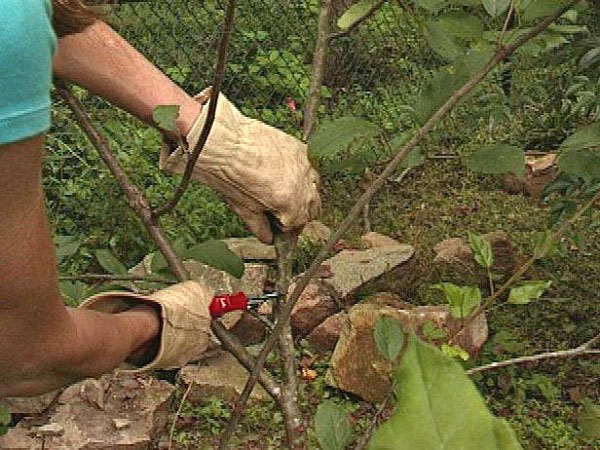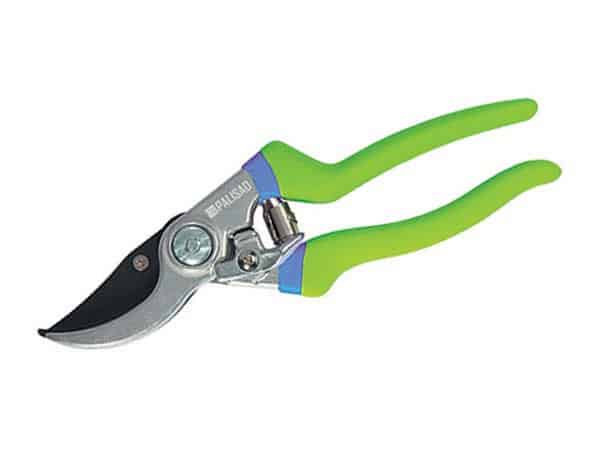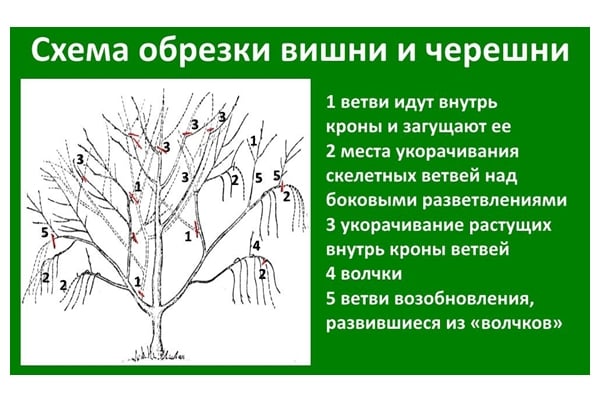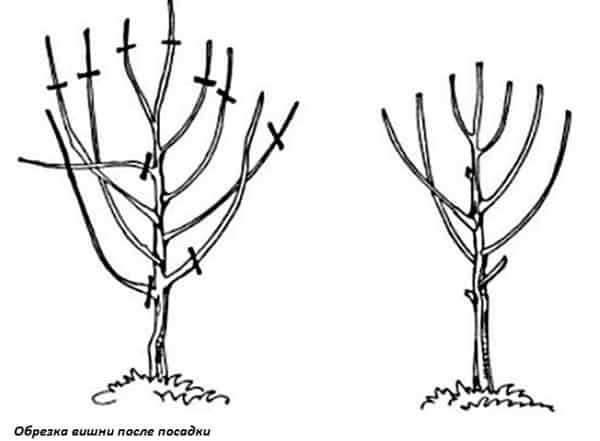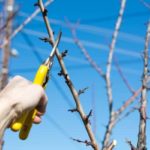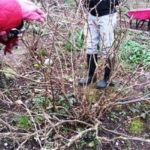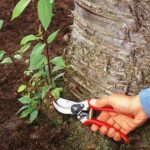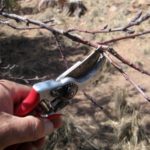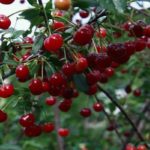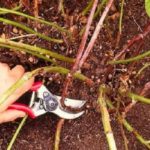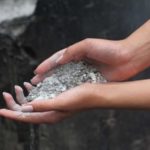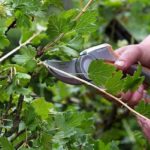Fruit trees are planted in dachas, suburban areas, and grown on an industrial basis. Although cherries take root in different climate conditions, are unpretentious to the structure of the soil, so that it produces a good harvest and the berries do not become smaller, in addition to watering and fertilizing, insect control and disease prevention, it is necessary to correctly form the tree crown. Pruning cherries promotes the emergence and development of new shoots and rejuvenation of the plant. During the procedure, excess branches that shade the crown are removed, allowing it to receive more sunlight.
Why do you need to prune a tree?
Cherry is one of the early ripening crops; it produces its first berries quite quickly, but already at the age of 12–15 years it stops producing a good harvest, or even stops bearing fruit altogether.
Trimming an old tree helps rejuvenate it. If you perform the procedure correctly and on time:
- It turns out a beautiful symmetrical crown.
- The taste and size of the berries improves.
- The plant gets sick less and is less often affected by insects.
If you simply remove dry branches on fruiting cherries, you should not count on high yields. Garden crops are pruned in 3 ways. Shortening shoots strengthens the tree and accelerates its growth. When thinning, the crown of the cherry tree is better illuminated and receives more air.
Before you start pruning, you need to know all the types of shoots. Fruits form on bouquet branches. The vegetative variety forms the skeleton of the cherry. During the entire period of development, the length of growing branches increases.
When thinning, some shoots are removed completely, while selective pruning removes them only partially. To make the cherry more voluminous, new shoots appear and the branches above the bud are removed.
Timing of work
Experts say that the time at which a stone fruit crop is pruned affects its growth, development, flowering, ovary formation, number and size of fruits. The procedure is used both in the fall and in the summer, and the cut sites are always smeared with garden varnish and treated with glue so that they do not become infected and new shoots do not grow.
In the southern regions, cherries begin to be pruned in March, or even in February.In those areas where autumn comes early, work is completed in late September; in the Krasnodar Territory and Transcaucasia, procedures continue until December, if the temperature remains above zero at night.
Spring circumcision
In order for the crown to form correctly, the cherry tree will delight you with a harvest of berries for a long time; there will be no need to remove shoots in winter or summer; pruning work is carried out in the spring. It is better to do this when the buds are no longer dormant, but have not yet fully opened. Typically, this phenomenon is observed in the second month of spring, in the northern regions - in May.
During the operation, the top, consisting of branches, due to which the crown thickens, is cut off. Shoots that grow perpendicular to the surface of the earth are removed, shoots shorter than 30 cm are left. The trunk itself must also be trimmed. It should only be slightly higher than the frame - about 20 centimeters.
In the first year after planting felt cherries, the branches are shortened to 0.5 m, and ¼ of the side shoots are removed the following spring.
Summer
It is better not to touch the tree with berries, since the cut areas take a long time to heal during the fruiting period. In July and August, only dry or diseased branches are removed. They must be burned so that the infection does not spread to healthy cherries. Sometimes in the summer it is necessary to cut off shoots that interfere with the growth of others, but they are shortened only a little.
Autumn
After fruiting, gardeners must prepare cherries for cold weather. Work is performed when the movement of juice slows down. Winter pruning must be completed before night temperatures drop below zero. You should not shorten shoots even during light frosts, since the plant may not survive the cold winter.
In the fall, young cherries planted in the spring are not pruned.In such a short period, the tree does not have time to adapt well to environmental conditions and may die during frosts.
What tools will you need?
To perform pruning work in the garden, you need to purchase special equipment. To remove thin branches, a pruner is suitable; to get rid of a thick shoot, you will need a saw. All equipment must be sharpened well so that no nicks remain on the cherry after trimming.
When removing branches affected by a fungal disease, the tool must be thoroughly cleaned and treated with an antiseptic. If the requirements are not met, a healthy plant becomes infected, and pathogenic microorganisms are transmitted along with the juice.
Features of pruning according to variety
The crown of tree and shrub cherries is formed identically. For both types, it is necessary to leave skeletal branches, thanks to which the plant will develop well. Trimming different varieties has its own nuances.
The crown of low-growing cherries thickens greatly, so it is often formed using the slender spindle method, in which only young shoots up to 2 years old are left. Those that already had berries are removed.
Low-growing cherries grow quickly, and in order for them to bear fruit well:
- Branches that become bare at the ends are shortened by 1/3 of their length.
- The crown is regularly thinned out.
- With significant growth, all shoots are not pruned at the same time; the procedure is performed several times.
Insects infest dried areas; to prevent this from happening, such branches are burned. On low-growing annual seedlings, shoots are shortened.
Dwarf cherry trees are pruned in early spring before the buds open. Thanks to this, it has time to get stronger before flowering.The crown is formed immediately after planting the plant. The shoots are shortened at a distance of up to 40 cm from the ground.
The cherry tree also requires crown thinning. If the shoots are trimmed correctly, the fruit branches are strengthened and forks are not formed.
When the growth length exceeds 15 cm and the tree has reached 5 years of age, the skeletal branches are exposed and rejuvenating pruning is performed. For cherries 3 meters high, further growth is limited.
Schemes and technology of crown formation
The yield of stone fruit crops decreases over time. To prevent the berries from being crushed and to improve the fruiting of cherries, the formation of a crown is required, since it thickens very quickly. For beginners, this procedure seems complicated, but it is possible to learn pruning. To form the crown, different technologies are used, one of the methods is shortening:
- weak;
- average;
- strong.
In the 1st option, 1/4 of the growth of shoots per year is cut off, in the second - 1/3, and in the third - half.
The crown is also formed by thinning, which makes it possible to reduce its diameter, prevent thickening, and increase the number of fruits.
Another method that requires skills and knowledge, fan palmette, involves fixing the shoots with a trellis, old branches are untied every year.
Young seedlings
Cherries that will winter for the first time are not pruned in the fall; only the shoots are removed, which impede the development of the tree or extend from the trunk at an acute angle. The crown of the seedling is formed in the spring. To do this, separate the strongest branch that grows vertically. Another 5 shoots are left, which are directed in different directions and are 10 cm apart from each other.
tree cherry
The crown of such varieties of garden crops is formed like a bowl.Branches that are located at a height of 70 cm and below must be removed. In order for annual shoots to develop lateral branches, they are shortened slightly. Not everyone knows how to properly prune cherry trees. This must be done at an angle, freeing the plant from the shoots that intertwine with each other.
Bush
This variety of cherries quickly thickens, which leads to crushing of the berries and deterioration of fruiting. The crown is formed around one powerful skeleton; shoots are pruned and placed next to the main trunk.
In two-year-old bush plants, branches that bend down are shortened, as well as shoots more than 50 cm long.
Nuances of rejuvenation
To increase the yield of ripe cherries, the shoots are pruned in the spring, but there is no need to touch a large number at once, since the crop does not have enough strength to bear fruit. Pruning of old bush cherries is carried out when the branches are exposed. They are shortened by half or a third, and the skeletal shoots are shortened to the very buds.
To rejuvenate the tree-like variety, dry shoots are removed and the annual branches on which the berries are set are slightly pruned.
Post-procedure care
In the spring, work on forming the crown and shortening the shoots should be completed before the sap begins to flow. In autumn, cherries are pruned at above-zero temperatures throughout September; in the south - October and November. On the second day after the procedure, the cut sites are treated with a disinfectant, lubricated with garden pitch or oil paint. In winter, plants are watered abundantly, fed during the growing season, sprayed with Bordeaux mixture to prevent diseases, and fight insects.

